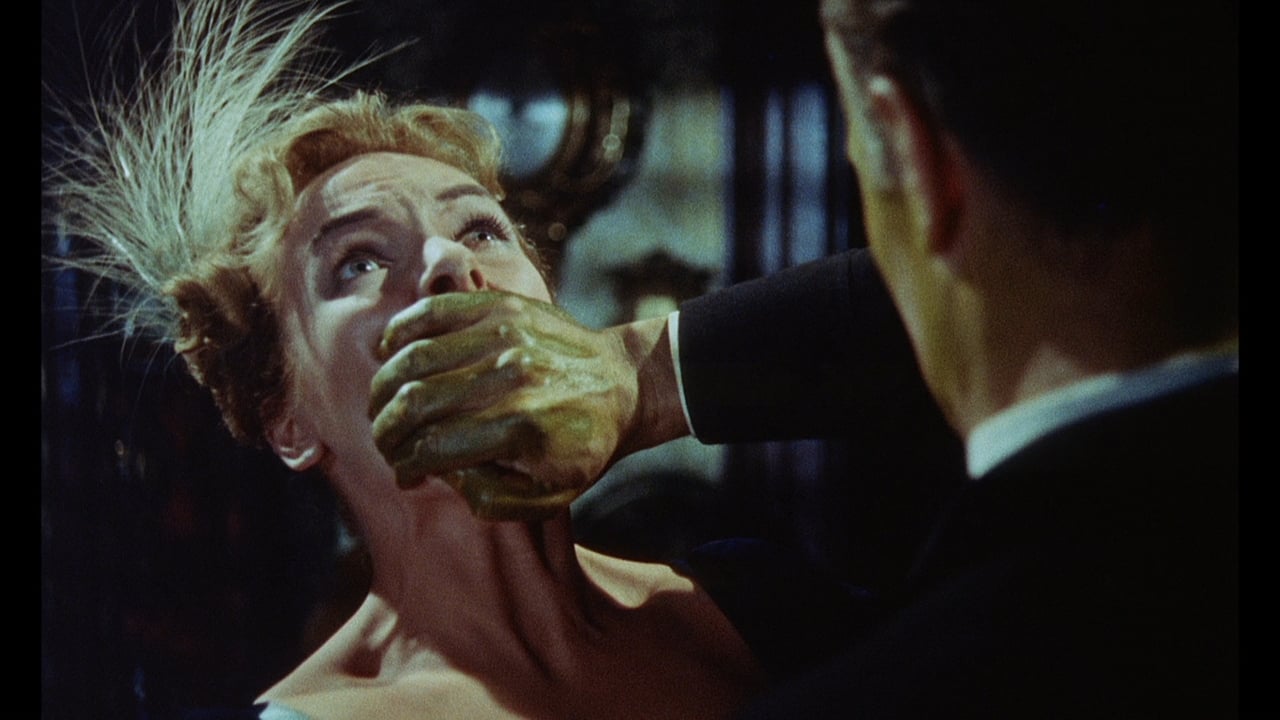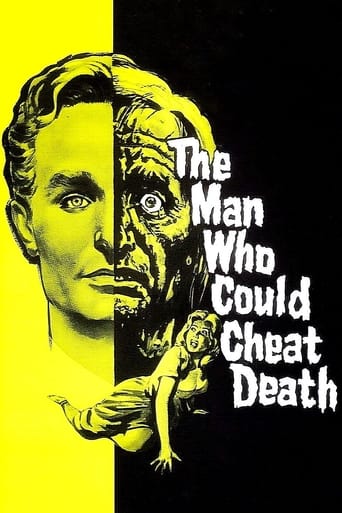

Wonderful character development!
... View Moregood back-story, and good acting
... View MoreThis film is so real. It treats its characters with so much care and sensitivity.
... View MoreThis movie feels like it was made purely to piss off people who want good shows
... View MoreThe Man Who Could Cheat Death is a carefully presented and decently crafted movie from Hammer Films; and while for the most part it lacks the gusto of Curse Of Frankenstein and Dracula it's a decent enough addition to Hammer Horror.The movie does take quite a while to get going, though. The first 45 minutes or so are bogged down in over-talky scenes that occasionally tell the viewer plot details that are already known - or at least strongly guessable - and the film suffers from some quite bad overacting from Anton Diffring in the set up stages of the plot. Like the film, though he improves as things develop and ceases to look as if he's acting, which is the biggest fault in his performance in the early part of the movie.Diffring plays Georges Bonnet, both a surgeon and noted amateur sculptor, well respected by the art fraternity. Bonnet hides a ghastly secret, however: this 35 year-oldish handsome man is actually 104 (about the same age as Cliff Richard) and through means of a glandular operation has been able to prolong his life, banishing sickness and ageing to boot. Every 10 years the effect wears off, and Bonnet must find a new unwilling donor to increase his already unnatural life span.Diffring is lent sterling support from Hazel Court and Christopher Lee - this is one of Lee's most relaxed early performances and he does well in the role of a young surgeon coerced into performing the operation on Bonnet - and Hammer's production design is as usual impeccable.The movie also ends on a neat twist which you will probably see coming, but is effective anyway. All in all a neatly done, not quite top draw Hammer offering. It just needed more pace during the first half.
... View MoreHammer's most famous and greatest 'mad science' franchise is, of course, the great Frankenstein series starring the almighty Peter Cushing as the ruthless and yet somehow very likable Baron Victor Frankenstein. While THE MAN WHO COULD CHEAT DEATH (1959) is by no means as great as Hammer's Frankenstein films it is a very atmospheric mad-scientist-flick with an excellent cast. Directed by Hammer's Number one, Terence Fisher, THE MAN WHO COULD CHEAT DEATH is an adaptation of a play that was first filmed as THE MAN IN HALF MOON STREET (1945) which I haven't seen yet.The mad scientist in this film is played by the always-sinister Anton Diffring, who had played Baron Frankenstein in Hammer's own TALES OF FRANKENSTEIN, a 1958 pilot for a planned Frankenstein TV-show that wasn't made. Actually, Diffring's character in this movie, Dr. George Bonner isn't really that 'mad', regarding his situation: In Paris of 1890, Dr. Bonner is a man who seemingly is in his 40s. However, he is in fact 104 years old and keeps his youth with the aid of a serum. In order to survive, he needs periodic gland transplants from young and healthy victims. Needless to say he is willing to kill for his life...THE MAN WHO COULD CHEAT DEATH co-stars two Hammer icons, British Horror-beauty Hazel Court and the inimitable Christopher Lee. Both deliver great performances as usual. Personally I like Christopher Lee most when he is evil, but hero-roles such as in this film also fit him well. Anton Diffring is a specialist for sinister and macabre characters, and he is once again excellent here. 19th century Paris is a good setting for a Hammer film; even though most of the movie plays indoors here, director Fisher once again makes great use of the Hammer-typical visuals, creating a thick Gothic atmosphere. Overall, THE MAN WHO COULD CHEAT DEATH offers few surprises and may not be an essential must-see, but it is tense and atmospheric Gothic Horror and should not be missed by my fellow Hammer-fans.
... View MoreNot really a "horror" film, this one seems to have gotten lost in the shuffle over the years, though it obviously has its fans. Hammer did a fine job here of maximizing the budget for sets and costumes - it all looks fine, especially Hazel Court! Anton Diffring was never the most engaging of leading men, but some of that remoteness actually works in favor of the character here, though perhaps there's a bit too much at times. Hammer's big mistake here was transferring the setting of the story from London to Paris - we know that Bonner and Dr. Weiss (Arnold Marne, who walks off with the acting honors, by the way) are from Germany or Austria, so there's no problem about their accents - but everyone else jolly well speaks with veddy British accents! Perhaps that's why, three years later, Hammer transferred PHANTOM OF THE OPERA from Paris to London...
... View MoreTHE MAN WHO COULD CHEAT DEATH (the Hammer Films remake of 1945's THE MAN IN HALF MOON STREET, based on the play by Barre' Lyndon) seems to be a forgotten fantasy-thriller. Often compared with Oscar Wilde's PICTURE OF DORIAN GRAY, this film rarely seems to get the same airplay on late night TV or on any of the "Shock Theatre" programs that many of the other Hammer horror hits did, and has yet to receive a home video release. With so much of the Hammer library now out on DVD, and since Paramount handled Hammer's distribution for this (as well as having produced the 1945 original), it would be nice to see the two films released to DVD as a double feature. (Much like the HOUSE OF WAX/MYSTERY OF THE WAX MUSEUM or the Frederic March and Spencer Tracy versions of DR. JEKYLL AND MR. HYDE.)
... View More